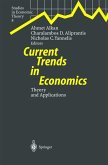One of the core building blocks of traditional economic theory is the concept of equilibrium, a state of the world in which economic forces are balanced and in the absence of external influences the values of economic variables remain static. Many traditional equilibrium models, or equilibria, are established based on the rational behavior of individuals within financial markets, such as traders, market analysts, and investing firms, and their ability to maximize profits, no matter the cost. Yet what happens when these market participants behave in an irrational manner, and how does this impact economic equilibria? Contemporary economists have agreed that a process similar to Darwin's Theory of Natural Selection takes over, whereby equilibria are shaped not by the behavior of individual participants but by an environment outside its control (i.e., an environment with little concern for maximizing profits). It is an environment in which those "selected" produce positive financial gains, but have no regard for how it was obtained or underlying motivations-and those participants suffering losses disappear altogether.
Evolutionary Foundations of Equilibria in Irrational Markets proves traditional economic equilibria continue to occur despite natural selection in irrational markets. It covers a wide sampling of equilibria under various scenarios, and each chapter addresses the results of these models at an aggregate level. The text is supplemented with charts and figures to drive home key findings and proofs, making it of interest to students and researchers in the areas of economics and behavioral finance.
Evolutionary Foundations of Equilibria in Irrational Markets proves traditional economic equilibria continue to occur despite natural selection in irrational markets. It covers a wide sampling of equilibria under various scenarios, and each chapter addresses the results of these models at an aggregate level. The text is supplemented with charts and figures to drive home key findings and proofs, making it of interest to students and researchers in the areas of economics and behavioral finance.
From the reviews: "This is a very interesting book, to mathematical economists and applied probabilists ... . Furthermore, since this is an area that is still open to further developments, this book may be an excellent starting point for further research. The book is well written, and balances the material extremely well, so that it can be read by a wide audience. The references also help the reader who wishes to get into more detail on the wide (not mathematical) literature on the subject." (Athanasios Yannacopoulos, Mathematical Reviews, January, 2013)








